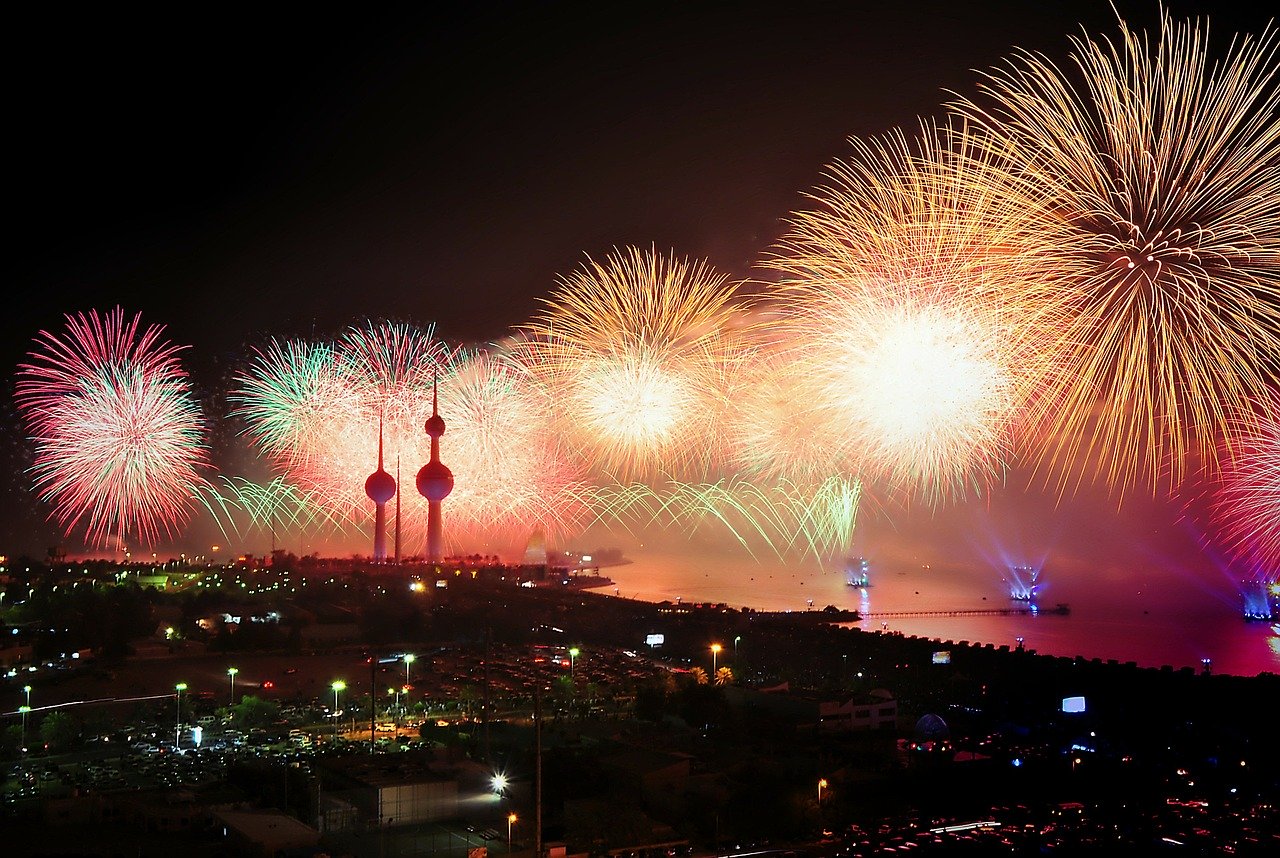Kuwait is among the top 10 crude oil producers in the world and has the fourth-largest sovereign wealth fund. That, along with its relatively small population of 4.26 million, places Kuwait among the richest countries in the world per capita.
Similar to nearby countries like Saudi Arabia and Bahrain, the health of Kuwait’s economy is largely tied to the price of oil. In 2016, the country faced its first budget deficit in almost two decades as a result of declining oil prices. The aforementioned nations have taken significant steps to diversify their respective economies. However, Kuwait has been slower to adapt as a result of substantial sovereign assets and government-legislator frictions.
Nonetheless, the country’s non-oil revenue grew by 3 percent in 2019 and was projected to grow at a similar rate in 2020. And, like Saudi Arabia has done with mega projects like Neom and Qiddiya, Kuwait is tying its economic aspirations to a planned city development.
The World’s Tallest Building and Other Plans
New Kuwait 2035 is a government plan that aims to transform the Middle East country into a global financial hub with less economic reliance on oil revenues. Silk City (Madinat Al-Hareer in Arabic) is integral to that plan. If realized, the master-planned, 250-square-kilometer city in northern Kuwait will be the world’s largest marine-front project.
The area where Silk City will be built is on the northern end of the Gulf bordering Iran and Iraq around the Shatt-Al-Arab waterway. It is accessible from Kuwait City, the country’s capital, via the newly-constructed, $3.6 billion Sheikh Jaber Al Ahmed Al Sabah Causeway. Construction thus far has been limited to a power station, scattered houses, and a few roads.
That isn’t to say Kuwait doesn’t have grand plans for Silk City. Rather, the government’s aims to transform the region into a capital capable of housing 700,000 citizens, which would make it the most populous city in the country. Kuwait also intends to build the 1-kilometer-high Mubarak Al-Kabir Tower, which will surpass Dubai’s Burj Khalifa as the world’s highest tower.
Other plans include a rail network; a free-trade zone for Bubiyan Island’s Mubarak Al-Kabeer Port; a logistics and industrial hub; an Olympic stadium; and an international airport. These were all announced as part of Silk City’s $86-billion Phase 1 in February 2019.
China’s Belt and Road Initiative
China will be heavily involved in the development of Silk City. The country signed a cooperation agreement with Kuwait for the city’s development in 2014. The two parties signed another agreement in 2018. Additionally, a 35-member Chinese delegation visited Kuwait in February 2019.
At that point it was agreed that the Chinese Construction and Communications Company would oversee the first phase of the project via either public-private partnerships or long-term leasing. This is in line with China’s Belt and Road Initiative, which aims to expand trade networks as well as the republic’s political and economic influence.
China is particularly interested in the Mubarak Al-Kabeer Port which, upon completion, will be among the closest sea ports to Central Asia. “China is involved in Khalifa port in Abu Dhabi, Duqm port in Oman, Jizan in Saudi Arabia, Djibouti and Port Said in Egypt,” notes Zayed University professor Jonathan Fulton. “Kuwait can be part of this, while also connecting to the overland routes of the New Silk Road through Asia and down into Iran and Iraq.”
Peaceful Protests
Despite the relative wealth of Kuwait and the obvious benefits of Silk City, not everyone in the country supports the ambitious project. Kuwait City experienced significant flooding during winter 2018 and, one year later, many streets remained in poor shape. While some residents spoke of corruption regarding road-surfacing contracts, the government spent considerably more time focusing on plans for Silk City.
This culminated in November 2019 with thousands of citizens converging at Al-Erada Square to demand the resignation of Prime Minister Sheikh Jaber Al-Mubarak Al-Sabah. Not long after, he was removed and replaced by Sheikh Sabah al-Khalid al-Sabah.
Political Hurdles
The removal of Sheikh Jaber Al-Mubarak Al-Sabah might have satisfied the demands of protesters, but it hasn’t addressed all of the political hurdles associated with Silk City. The project is being managed by the eldest son of Emir Sheikh Sabah Al-Ahmed Al-Sabah, Sheikh Nasser. He has faced substantial opposition from MPs concerned with some of the language in legislation for Silk City.
Among other problems, it was believed that the proposal included placing the city outside of parliamentary oversight and allowing the consumption of alcohol. MP Safa al-Hashem called it the “most dangerous law I have ever seen.” Others have argued that the project has not been fleshed out. In particular, plans lack a breakdown of how the $86 billion will be spent.
By contrast, proponents of the project cite its ability to help Kuwait begin to transition away from its economic reliance on oil exports—which, as of 2019, comprised nearly 90 percent of state income. More than half of the country’s population is under the age of 25 and Silk City could create as many as 200,000 jobs, which would alleviate concerns of an overstaffed public sector.

